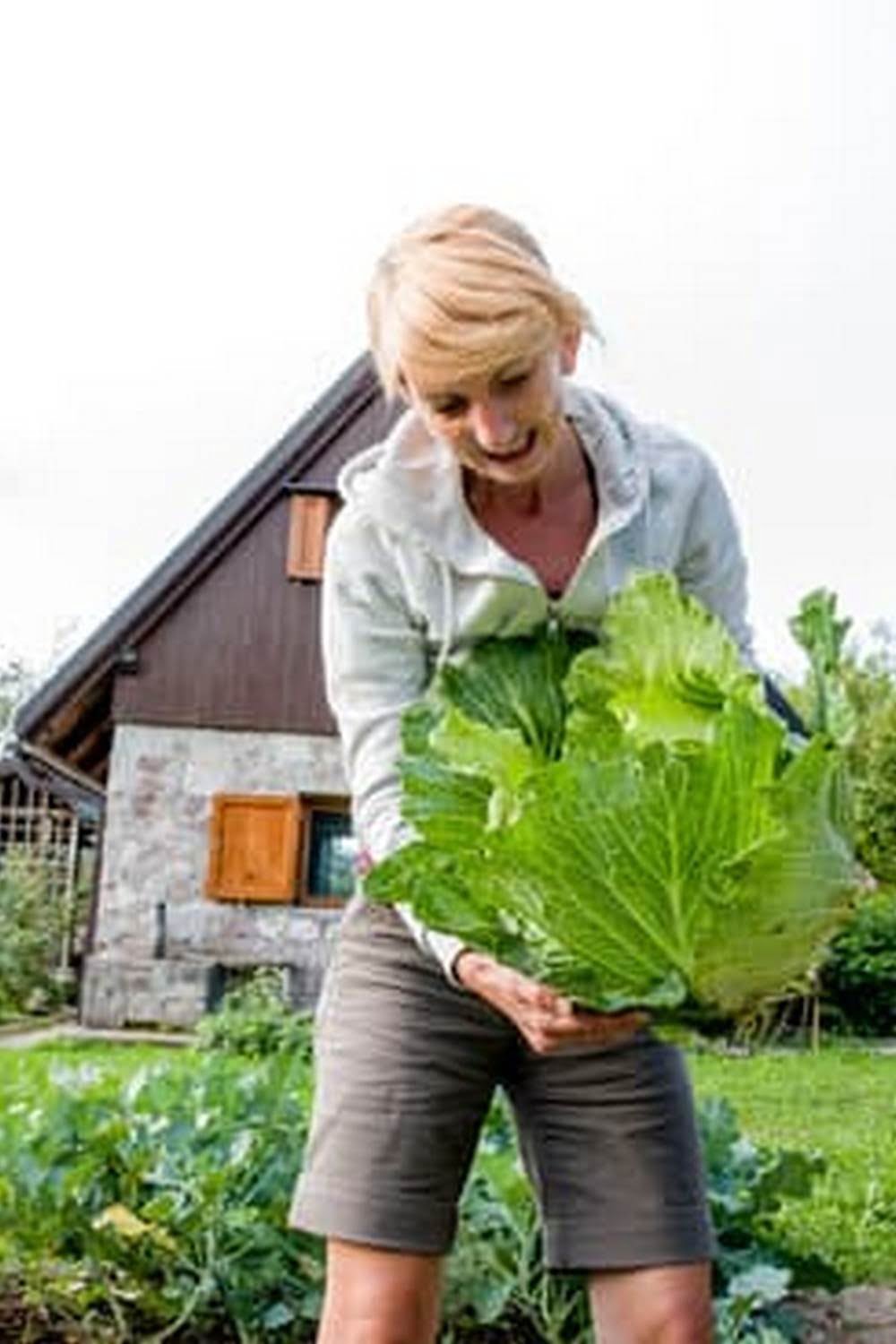Introduction
Introduction: Growing your own vegetables in your garden can be a rewarding and satisfying experience. Not only is it relatively cheap and easy to do, but it can also yield a huge variety of nutritious and delicious vegetables. From leafy greens such as spinach and kale, to root vegetables like carrots and radishes, there is an abundance of options to choose from when establishing a vegetable garden. Homegrown vegetables are often much healthier than store-bought alternatives due to their nutrient-packed content containing essential vitamins, minerals and antioxidants that promote overall wellbeing. Additionally, growing your own food helps reduce food waste from supermarkets as well as minimizing your ecological footprint by eliminating single-use plastic packaging from transportation.
Benefits of Growing Your Own Vegetables
Growing your own vegetables can have many beneficial environmental impacts. Not only are you in control of what chemicals, if any, are applied, but you can also minimize your carbon footprint by not having to travel to a store for produce. Additionally, growing and harvesting your own vegetables reduces food waste, since you no longer need to worry about whether the produce sold in the store is fresh enough to eat. Furthermore, gardening is an excellent way to reduce your dependency on supermarket chains that may be contributing their own negative environmental impacts by over-packaging and using excessive amounts of plastic packaging.
Types of Vegetables to Consider
There are dozens of vegetables that can be grown in a home garden, but it’s important to consider local microclimates and climate conditions when choosing what to grow. When selecting types of vegetables to grow in your garden, you will want to factor in things such as your day length, rainfall amounts and temperatures for various seasons. Generally speaking, cool season veggies such as lettuce, kale and spinach do well when planted during spring or fall. Warm season vegetables such as squash, tomatoes, peppers and eggplant thrive best when the days are warm during summer months. Root crops like carrots, turnips and beets need more time to mature so plan accordingly in order to get them harvested before the weather gets too cold.
Also look at some of the more unusual vegetables that do well when planted further into the growing season – broccoli raab is a cool weather vegetable that leaves many people pleasantly surprised with its striking taste while Chinese cabbage is another vegetable worth exploring. Those with limited space may want to consider vertical gardening by planting vines or items that can hang over onto trellises or up against walls. Many cucumbers and beans are ideal for this type of growing (and even Japanese pumpkins!) Doubling up on beds is also great for those with small yards; cauliflower and onion both enjoy having potatoes nearby while basil likes being planted next to oregano which both make great additions alongside sweet peppers, tomatoes or leafy greens like spinach. With a little research you are sure find an array of plants that will thrive in your microclimate!
Preparing Your Garden
Before you start to plant your garden, it is important to get a good plan in place. For vegetables, raised beds are ideal for allowing the vegetables to receive the optimal amount of light and water intake. These raised beds tend to be formal and structured with planting rows that run flat on the ground or slightly elevated. They can also be built as freestanding structures adjacent to vertical trellises and fencing, which can help maximize your space if you have limited area for your garden. Another space-saving option is vertical gardening – this involves growing veggies vertically up a structure like a wall or fence so they don’t require much floor space at all. You may need some additional equipment such as netting, poles, twine, or brackets depending on what vegetables you plan on growing. Before deciding upon any specific design plan for your garden, it is important to research what types of vegetables will thrive best in your climate and soil type.
Planting Vegetables
When it comes to selecting the best seeds and seedlings for a home garden, there are several important factors to consider. First, choose plants with the characteristics you desire in a vegetable – such as hardiness or palatability. You should also consider your local climate and soil type when selecting seed varieties, as certain vegetables may not be suitable for your area. Additionally, take note of each plant’s maturity date so that you can plan accordingly and avoid frost damage which can occur if planting too early or late. Finally, select seeds specifically suited to the germination method that you plan on using; some prefer shallow direct sowing while others require deeper planting and start with transplanted seedlings rather than direct sown seeds. Additionally, some cold-weather crops may benefit from pre-sprouting indoors prior to planting outdoors in order to give plants a head start at talling and maturing faster once transplanted into the garden.
Caring for Your Vegetables
Composting is one of the most important elements in growing vegetables in your garden. Compost improves soil quality by adding humus and nutrients to the soil, which can help your vegetables to develop strong and healthy roots. To make a compost pile, it’s best to layer “greens” like grass clippings and vegetable trimmings with “browns” such as leaves and twigs. Also be sure to lightly water each new layer to provide moisture for microbial activity that will help break down the material into a nutrient-rich compost material. You can also use compost tea or worm composting if you possess the space and resources.
In addition to compost, fertilizer should also be taken into consideration when growing vegetables in your garden. Fertilizer should be based on the kind of vegetation you are planting; some crops require more nitrogen while other might need more phosphorus or potassium, so ask at your local nursery which type of fertilizer would best suit your vegetation. Lastly, ensure that you green manure crops such as legumes are included in your home garden rotation plan so you add natural fertility back into your soil over time instead of completely depleting its reserves from continuously growing vegetable crops year after year .
Common Issues & Solutions
Growing vegetables in your garden can be a rewarding and fulfilling task. However, if you are not careful there are several common issues that could arise while tending to your gardens. Pests, fungi, weeds and other critters can disrupt a perfectly maintained garden.
To help avoid or minimize such issues, it is important to understand certain pest and weed prevention methods such as using sticky traps for insects, or regularly clearing of heavy vegetation to minimize insect reproduction. Insecticides, organic and non-organic alike may also be an option for larger infestations.
For weed control, try to stay ahead of those pesky weeds from popping up through regular manual removal or use mulching material such as grass clippings or straws to decompose into the soil and naturally act as a filter against gaining new weed growth. Alternatively, if all else fails you can also use chemical herbicidal products but they will likely have less desirable effects on other plants than manually removing the offending foliage.
No matter what method of maintenance you may choose, keeping up regular gardening practices in your vegetable beds will prove beneficial in growing successful produce crop!
Conclusion
In conclusion, growing vegetables in your garden can be an enjoyable, rewarding experience. There are a wealth of varieties that you can choose from to add color and texture to your garden. You can extend the growing season for many vegetables by using cold frames or hoop houses, which will give you greater choice when selecting plants for your garden. For more tips and advice on how to successfully grow vegetables in your garden, check out resources from gardening experts like websites or local organizations.

If you’re looking to get into vegetable gardening, or are just looking for some tips on how to make your current garden better, then you’ve come to the right place! My name is Ethel and I have been gardening for years. In this blog, I’m going to share with you some of my best tips on how to create a successful vegetable garden.





